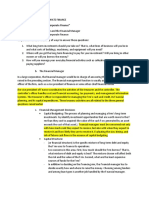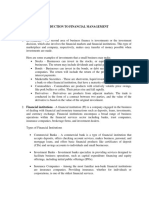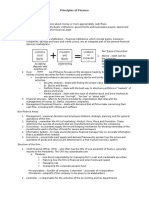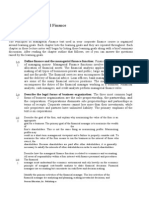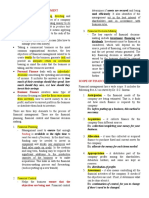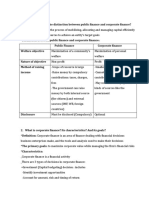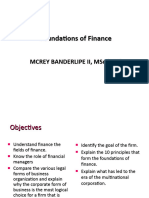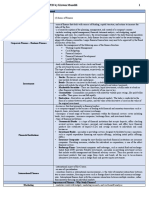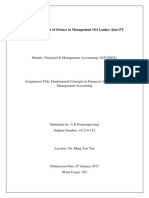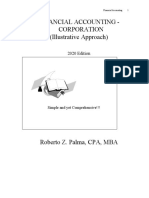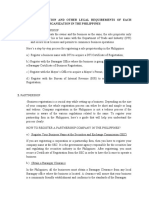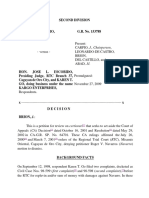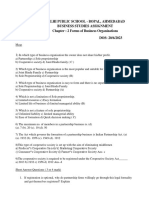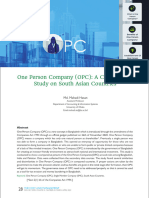0% found this document useful (0 votes)
133 views9 pagesChapter 1 - Notes
Managerial finance deals with financial decisions that all firms make regarding cash flows. It is important for non-finance areas like management, marketing, accounting, information systems, and economics. The chief financial officer oversees the treasurer and controller. Common forms of business organization are proprietorships, partnerships, and corporations. Proprietorships are owned by one individual while partnerships have two or more owners. Corporations are separate legal entities from owners with unlimited life, transferable ownership shares, and limited liability but double taxation.
Uploaded by
Faizan ArafatCopyright
© © All Rights Reserved
We take content rights seriously. If you suspect this is your content, claim it here.
Available Formats
Download as PDF, TXT or read online on Scribd
0% found this document useful (0 votes)
133 views9 pagesChapter 1 - Notes
Managerial finance deals with financial decisions that all firms make regarding cash flows. It is important for non-finance areas like management, marketing, accounting, information systems, and economics. The chief financial officer oversees the treasurer and controller. Common forms of business organization are proprietorships, partnerships, and corporations. Proprietorships are owned by one individual while partnerships have two or more owners. Corporations are separate legal entities from owners with unlimited life, transferable ownership shares, and limited liability but double taxation.
Uploaded by
Faizan ArafatCopyright
© © All Rights Reserved
We take content rights seriously. If you suspect this is your content, claim it here.
Available Formats
Download as PDF, TXT or read online on Scribd
/ 9














